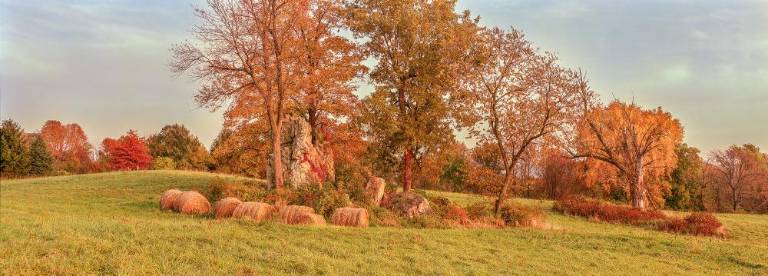Who speaks for the rocks?

Lookout Mountain in Goshen is the location of eight caves called the Dutchess Quarry Cave Site. Excavated in the 1960s, they yielded objects and tools dating back 12,000 years, indicating use as a Paleolithic seasonal hunting camp. The caves are unique and now on the National Register of Historic Places, which required a protective 13-acre buffer area. Like many archeological sites, the caves are fragile. They are not accessible to the public.
The area is also rich in dolomitic limestone, a mineral used in roadbeds and asphalt. The whole site is owned by Orange County and has been leased to quarry companies for 50 years. In October, the county legislature voted 16-5 to consider selling 31 acres near the caves, which contain an estimated 4 million tons of dolomite. The land was deemed “unnecessary for public use.” One big concern was to limit county liability when the mining is done and the quarry fills with water. Selling the property would do this. The county is presently preparing a document to invite offers to purchase that land. Legislator Barry Cheney, chairman of the county Physical Services Committee, expects there will be offers in this calendar year. Local archeologists and citizens are very concerned that the caves may be in danger.
Pulpit Rock is a 15-foot limestone monolith in an empty farm field on the edge of the Village of Warwick. It rises out of rocky soil too poor for farming. The parcel was sold to a developer who wants to build a 100-room Pulpit Rock Inn on the site and is asking for special planning board approval. The current plan has cottages surrounding the rock and making it accessible to visit. There is strong, vocal, public pushback about safety, environmental and open land issues. This process, too, will unfold over the next year.
What these two properties share is the difficult issue of competing use. Whose vision of Land, Rocks, Water, Nature guides the uses of land? In both these cases, there are unpredictable geological and water table consequences of the required blasting, mining and construction. Is the risk of damaging these ancient icons worth it? In both cases there has been talk about developing the sites for “heritage tourism,” offering a connection with the past and the land, a pleasant complement to Woodbury Commons, wineries, breweries and Legoland.